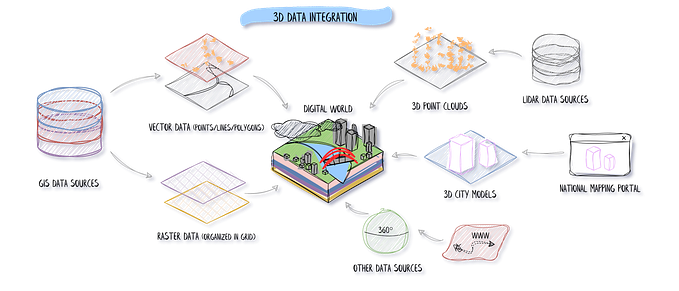How to pitch your product? Shark Tank edition..
WARNING: You may end up binge watching this blog.
Have you pitched your idea to a potential customer, a partner, a venture capitalist, your manager, your chief product officer or even your family? Was the idea received with open arms or was it shot down?
In my opinion there are only three types of ideas:
- 49.99% of the ideas are disastrous.
2. 49.99% of the ideas are just not understood.
3) .02% of great ideas are well understood by its audience.
This blog is an attempt to make that tiny decimal bigger.

Trust me, if not pitched properly you can make a million dollars' worth of an idea sell for peanuts. On the contrary you can sell cat drawing for hundreds and thousands of dollars if pitched well. Don’t trust me? Watch this.
Steve, ended up selling 21000+ cat drawings.
Ideas are like dishes.
Just like any good dish, an idea also requires 3 things to be appreciated.
- The ingredients
- The preparation
- The presentation
A. The ingredients
There are 4 key ingredients to any idea or a pitch!!
1. Relative advantage
The pitch for your product should easily convey the advantage of your product over existing standards.
The key here is to identify advantages over existing standards.
Think of existing standards as an anchor that people have in their minds to understand the problem with the current system.
For example, you can acknowledge Uber’s value only when you understand the problem with the existing taxi system. Or you can understand how drones can revolutionize agriculture only when you understand problems with the current agricultural system.
Without these anchors, it may be difficult for your audience to understand the problem you are solving.
Remember, your pitch should clearly articulate the problem that you are wishing to solve, else you may end up with a great product that no one needs. Learn from the peanut butter pump pitch.
2. Complexity
You should be able to explain your pitch to a 14 year old or a 60 year old and get them to understand it. It doesn’t matter whether they agree with the value, but they should be able to understand the value.
If you take more than a minute to help understand the problem & value, then there is a strong possibility that you have not understood the problem yourself.
For example, I am still trying to figure out what this product “Fish Frenz” is all about. If you figure it out, then let me know.
3. Triability
Triability means the smallest iteration to try. A pitch backed by something triable is 10x more effective than just slide decks. You can show and tell instead of just tell.
All 3 terms are critical here. It is minimum. Don’t make a $2000 segway as an MVP. No one will try something that expensive.
It is a product. Don’t call a tweet or a video as a product and assume the feedback from the video constitutes your product feedback.
It is viable. It is something that works. If your final product is a submarine, then your MVP should at least be a boat. Here, I am assuming that being on water is of some value.
A minimum viable product will also help you move the product through the market and get some early signals.
Don’t pitch ideas without protypes. Even a 10 year old knows that. Check it out for yourself.
4. Observability
If your product has hit the market and you have some measurable advantage to quote, then nothing beats observations.
With metrics, you have just graduated your pitch from ill-found excitement to empirical optimism.

There is nothing that beats knowing your numbers. Be these numbers for your product success, your revenue success, or your customer success. Listen from the cheesiest entrepreneur how numbers can make or break a pitch deal.
B. The preparation
Keeping the 5 ingredients intact, you need to think, how are you messaging these ingredients to the audience.
1. Story telling
Story telling is a great way to articulate the relative value of your pitch. Story telling is particularly helpful when the problem is not intuitive to the audience. Also, it makes your audience empathize with the problem without feeling that you are doing a hard sell.
For any good story telling you need:
A persona: he or she is the person who is the protagonist of your story.
A problem: this is the problem that your product solves.
A solution: this is your product.
The value: this is the value that your customer gets from your product.
If you have a story worth telling, then tell. A good story can inspire, can motivate, it can even get you funding. I will let the below pitch do the talking.
2. Jump straight in
If your audience is well versed with the problem, then taking 60 seconds to narrate a story may become an overkill.
If your audience is well versed with the problem, then you may begin with a probing question instead or a re-iteration of the problem.
Imagine saying something like,
Probing question: “Do you know how much pollution is created by the stubble burning of farmlands?”
Re-iteration of the problem: “149 million Tons, is the amount of CO2 released by today’s farmers when they burn their stubble each winter, in India”.
Now that the problem is understood, jump straight into your solution and your value.
Look at this pitch. 60 seconds into the pitch the value is well understood, and you can see the smiles and the nods. Sometimes the simplest pitches are the best.
3. Be the Storyteller
Become a good storyteller. If you aren’t then practice. There are some characteristics of a good storyteller or you can say few unsaid rules of good story telling:
- Know your audience well.
- Think about what your audience wants to hear and not just what you want to say.
- Avoid jargons.
- Avoid repeating yourself.
- Say as much is required to deliver the point.
- Check whether you have some cliched words such as “such as”, “actually”, “aahs”, “umms”.
- Check your hand gestures.
- Check your voice modulation, emphasize when needed.
- Bring charisma and presence.
- Engage with your audience.
- Be a good listener.
You could be the best salesperson, but you really need to listen. Watch it for yourself.
4. Practice
How do you get your pitch to perfection? Practice!! There is no shortcut to this.
You practice your narration multiple times. You do it in front of the mirror, in front of your family, strangers, in front of any living or non-living thing.
You do it so many times that your pitch becomes second nature.
You do it so many times that your pitch, the emotions, the hand gestures, the voice modulation, the dramatics are all baked into your DNA.
At times things will not bake into your DNA and that is ok. Just breath and start all over.
C. The presentation
So, you have your ingredients and preparation done, now comes the presentation.
1. Always be prepared
You can find your next potential customer on your train ride home.
Or your VC may give you the 30 seconds she has while coming down the elevator.
Be always prepared with your pitch. Now that it is in your DNA, I hope that is not a problem.
Practice a lot else you could be of the highest profession and just won’t know what you are trying to pitch for. Look for yourself for pitches gone disastrously wrong.
2. Know your audience
It is very important that you know who you are pitching to.
Do the necessary background checks on the investors or customers. Here I am not talking about checking their credit scores but checking their social media profiles to understand what they like or dislike.
You should understand what your audience stands for. Maybe your investor is a numbers person so finetune your finances. If the investor is a team person, then ensure you talk about your core team and the value that each member brings.
If you can speak the language of your audience, then you have the voice of god. Shark Tank fans know that Kevin is a royalty lover and you can jump to 5:36 to see Kevin lit up to hear the golden words.
3. Learn to negotiate
Ok, this is a tough one. Now that you have your value, your product, your team, your finances, and your pitch perfected.
Play the devil’s advocate. Imagine you are your audience and now start asking yourself tough questions.
Question everything that you can be asked and be prepared.
- Why do you think this is the minimum viable product?
- Why do you think this is the perfect team?
- What are your product metrics and numbers?
- What are your financial metrics and numbers?
- Have you thought about any additional customer scenarios?
- What is your moat?
- Why can’t competitors easily copy your product?
- What is your competitive advantage?
- What is your exit strategy?
- What is your growth plan?
- How does your backlog look 6 months down the line?
- What help do you need for your product the most?
- How can the investor help?
- What is your discounting strategy?
- Any many more…
Struggling with negotiations skills, learn from this 13 year old.
4. Wear confidence on your sleeve
You will have butterflies in your stomach, when you pitch your idea. Especially when the stakes are high. You will feel pressurized.
Feel confident from inside. Be proud of the work you have done. Be proud of your team. Be proud of yourself. Confidence is the attire of the day.
Your confidence shows how confident you are to take your product to higher orbits.
Remember many times your investor is not only investing in your product but also you.
The below pitch is a great example of some amazing entrepreneurs, who knew what they were doing, knew their customer demography, knew their numbers, knew their product, and above all knew each other’s strengths. With confidence, they converted skepticism in their product to head nods of investors willing to jump in.
5. Still be ready to learn
Let this pitch also be a learning experience for you. Maybe there is something that you did not think. Maybe there is something about the market that you are not aware of, that your investor or customer knows more about.
And that is ok.
Do not feel pressured to always look good.
Above all, be honest. Honesty, may not win you a pitch but it will definitely help you win hearts. Don’t believe me, watch this pitch.
It is ok to not know and therefore it is ok to feel vulnerable.
Keep your learning hat on and learn as you present. Be confident and yet be humble.
Despite how well you are prepared, you can still be rejected. You may have experts in your audience and still not understand your vision. And it is ok.
Hope these small tricks help you to deliver your best pitch and convert the 50% folks who did not understand your pitch to your fans.
I watched over 8 hours of Shark Tank pitches to write this blog. Hope you like it.
Stats show that only 20% of the readers of this page will read this line. If you are one of those, then congratulations since you are an outlier. And outliers make it big. You deserve a clap so leave one for this blog.
If you’ve found value in my content and would like to support its continuation, I invite you to consider making a contribution at Patreon.
Your generosity enables me to keep creating and sharing meaningful content with you.
You can follow me on youtube or medium for regular updates on my own journeys of product management, business management, and leadership.








